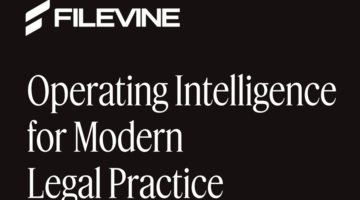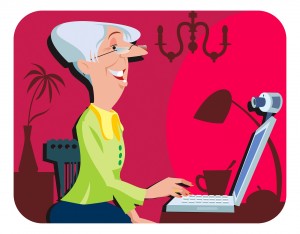 It’s been one year since State Bar of California separated its admissions and regulatory functions from the advocacy and educational functions. The latter are now housed in the California Lawyers Association, while the State Bar retains the former functions.
It’s been one year since State Bar of California separated its admissions and regulatory functions from the advocacy and educational functions. The latter are now housed in the California Lawyers Association, while the State Bar retains the former functions.
Of course, it couldn’t be a new year without the latest report from the State Bar about the bar exam. This study only tracks the years 2013, 2016, 2017 (and doesn’t include the July 2018 results). Notice the gap in years? Why? That reminds me of the infamous 18 and 1/2 minute gap of a conversation between then President Richard Nixon and his chief of staff Bob Haldeman.
The study, the fourth(!) in a number of studies trying to analyze what the hell has happened to the steadily declining bar passage rate over the last five year or so “…focused on determining if, and to what extent, the decline in bar scores and passage rates could be attributed to changes in examinee characteristics, not only previously available characteristics, but also the entering law school credentials of examinees, their law school experiences, and performance.” Got that?

4 Ways Your Firm Can Build Economic Resilience
It’s the key to long-term success in an uncertain business climate.
You can slog through all 113 pages of the report, but the Executive Report Summary is probably more than enough to make your eyes glaze over. Now I remember why I took statistics pass/fail in college, which squashed any thought of being a social scientist. However, if you are really truly fascinated about how the various law schools, both in state and out, performed on the July 2018 bar exam, then this link is for you.
All 55 law schools in the state (including ABA-approved, California-accredited and non-accredited institutions) were invited to participate in the study. Ultimately, 11 of 21 ABA-approved California law schools volunteered to participate; no non-ABA approved schools elected to join the project. Yes, you read that right; not one of the non-ABA approved schools here in California participated and that includes some of the law schools screaming the loudest to lower the “cut score.” The fact that none of those schools chose to participate is, I think, telling.
What were the best predictors of student ability to pass the bar? Again, the report states the obvious (at least to me): final law school GPA first, followed by the LSAT. Since no non-ABA approved schools chose to participate, there’s no way to know whether students that finished at the top of their classes at those schools passed the bar. One would hope that such was the case, at least for those at the top. Also, the study reconfirmed that racial/ethnic minority students who had the same credentials as white students tended to pass the bar at the same rate as the white students. Is there anything truly new in this study? I wonder.
So, it’s as many legal observers have said over the past few years, the quality of the incoming students has declined as law schools have continued to admit students who don’t have much, if any, chance to pass the bar. It can be the best education that money can buy (and often is), but if you can’t pass the bar, then you can flush that money down the toilet, at least if you want to practice law. Of course, the flunking student still has to repay those ginormous student loans and any attendant plumbing expenses.

How Filevine’s New DraftAI Cuts Out Hours Of Writing Work
Now it transforms your document creation with natural language prompts.
One more point and then I will stop talking about the California Bar Exam at least for one week. The State Bar has launched the first California-specific study of the knowledge and skills needed by entry-level attorneys. It’s about time. Yay! Some “boots on the ground” information provided by those who can “tell it like it is” today is bound to be more informative than what we old dinosaurs have provided. No more guessing about what newer lawyers are doing in their practices, no more dithering about whether the skills that newbies are taught mesh with what they are actually doing, no more perseverating about whether the bar exam adequately measures what new lawyers need to know in these times.
The Bar’s press release says that the analysis will “…collect detailed, empirical data about how attorneys use their knowledge and skills to perform routine tasks in their legal practices. Key components of the study will include focus groups and surveys of California attorneys.” That being said, I doubt that changes, if any, to the exam will come any time soon.
The question of whether the bar tests what lawyers need to know is analogous to the issue of whether an employee is exempt or nonexempt. The exemption test is not what the job description says the employee does — it’s what the employee actually does, how the employee spends her time. Just as that kind of analysis informs decisions about whether to reclassify employees, this same kind of information, e.g., how the attorney uses her knowledge and skills in performing routine legal tasks, will be useful intel about how lawyers practice today.
Of course, that assumes that attorneys will still be needed to perform routine legal tasks and that those tasks will not be handled by some sort of artificial intelligence or a non-legal services provider. That’s an issue yet to be determined, but one which may well inform changes going forward. Will “the robot made the mistake” excuse pass muster with the court? That assumes that the court will still be composed of living, breathing, rational humans, rather than some form of AI able to make decisions. Please, no snide comments about whether courts might run better with AI than with humans. That’s a topic for another time.
 Jill Switzer has been an active member of the State Bar of California for more than 40 years. She remembers practicing law in a kinder, gentler time. She’s had a diverse legal career, including stints as a deputy district attorney, a solo practice, and several senior in-house gigs. She now mediates full-time, which gives her the opportunity to see dinosaurs, millennials, and those in-between interact — it’s not always civil. You can reach her by email at [email protected].
Jill Switzer has been an active member of the State Bar of California for more than 40 years. She remembers practicing law in a kinder, gentler time. She’s had a diverse legal career, including stints as a deputy district attorney, a solo practice, and several senior in-house gigs. She now mediates full-time, which gives her the opportunity to see dinosaurs, millennials, and those in-between interact — it’s not always civil. You can reach her by email at [email protected].